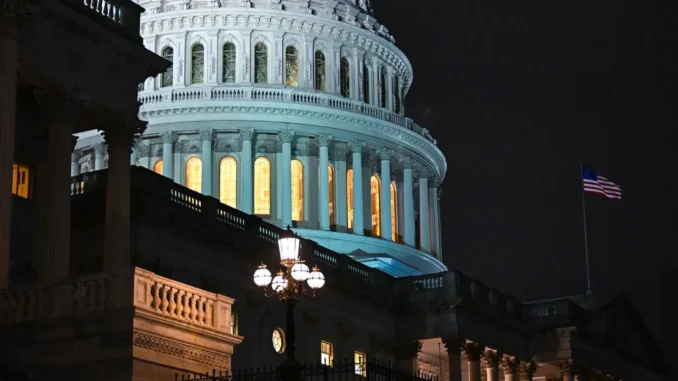
Erica Siaulnski, Staff Writer
On October 1st 2025, after failing to pass legislation for financial operations through federal agencies and programs, the government entered a federal shutdown that had plans to continue indefinitely. This led to many federal workers being laid off, SNAP benefits being taken away, loan and mortgage processing being delayed and delays to passports and visas being administered. Federally funded institutions like the Smithsonian and many other museums as well as national parks were instantly closed indefinitely.
On November 12th, President Donald J Trump signed a bill that was later passed by Congress that allowed the federal government to officially reopen. This marked the end to the longest government shutdown in the United States, lasting a total of 43 days.
The bill signed by the President will continue to fund the government until January 30th of 2026. Programs such as SNAP benefits, the Department of Veterans Affairs and Congress, Women Infants and Children (WIC benefits) and benefits targeted at women will be funded through this bill alone until September 30th of 2026.
While this marks a huge milestone in the shutdown, things may not return to normal straight away. The lack of funding for over an entire month caused damage to certain markets and it’s predicted that some of these effects could last for over six weeks if not longer.
Some federal workers are still waiting on backpay, and air travel is still being affected and may be affected for an uncertain amount of time. Certain national parks are attempting to make up for the huge attendance loss in the past month, considering that attendance can be directly connected to their funding in certain circumstances.
The looming threat of another shutdown in the near future is also something that some are concerned with. Due to the fact that the reasoning for the shutdown stems from Democrats and Republicans were unable to come to an agreement about funding of certain healthcare programs, the shutdown ended without a compromise to the funding of healthcare programs, which leads people to believe that the reopening may be temporary and the same issues may arise in the very near future, leading to another, possibly even longer and more damaging shutdown.
Other federally funded institutions such as the Smithsonian, that had to close due to the shutdown, are planning on reopening gradually. Organizations such as the National Museum of American History, the National Air and Space Museum were able to reopen Friday, November 14th and welcomed visitors who had been awaiting the reopening.
The reopening has led to many mass federal employee layoffs being reversed, and others are waiting on backpay, for the time they worked while receiving no pay. The end of the shutdown offered a lot of citizens relief, right in time for the holiday season, as well as the promise of their lives to return back to somewhat normal in the very near future.
Leave a Reply